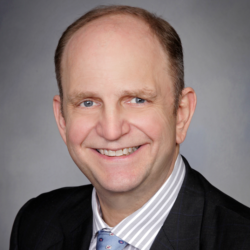Viewpoint: Addressing Montana’s Healthcare Shortage Should Begin With Occupational Licensing
Montana’s unprecedented shortage of healthcare workers requires a paradigm shift in occupational licensing regulations.
This article is part two of a two part column discussing occupational licensing and it’s impact on healthcare.
There are many reasons Montana is facing an unprecedented healthcare worker shortage.
- People living in Montana’s rural and frontier communities must often drive hours to visit a physician. Some counties don’t have any physicians. The Montana Department of Public Health & Human Services reports that 52 of the 56 counties in Montana counties are considered “medically-underserved,” and designated as health professional shortage areas.
- Montana has the fourth-oldest physician workforce in the nation. “Montana is now facing a wave of physician retirements”- Martin Teintze, Montana State University WWAMI Director.
- Montana’s growing elderly population will place more demands on the medical system. The U.S. Census Bureau estimates that more than 30 percent of Montana’s population will be over age 60 by the year 2030, an increase of 43% percent from 2012. Montanans in this age group now account for 34% of the demand for physicians; by 2034, they will account for 42%.
- Montana is experiencing an unprecedented “great healthcare worker resignation.” According to a Morning Consult poll, in the past two years, nearly 1 in 5 healthcare workers, or 18 percent, have quit their jobs in a “great resignation,” citing COVID-19, poor pay and burnout as reasons. A recent survey by Forbes shows that up to 47% of current U.S. healthcare workers plan to quit by 2025. According to the Montana Department of Labor and Industry, nearly half (48.5%) of Montana’s nurses say they plan on retiring or leaving nursing in the next five years.
Overwhelmed by the healthcare worker shortage, Montana hospitals and medical clinics are sounding the alarm. Providence Health Systems, which operates one of Montana’s largest hospitals, Providence St. Patrick Hospital in Missoula, reported a net operating loss of $510 million for the first three months of 2022. In Billings, health-care institutions aren’t just down just a few nurses. At the Billings Clinic, there are 120 registered nurse openings waiting to be filled while St. Vincent Hospital in Billings has 84 RN staff openings. “It is unprecedented times. We’ve had record numbers, we’ve stretched our resources to meet the needs of our community,” said Interim Chief Medical Officer Michelle Pierson of Billings Clinic.
Although a solution will require a multi-pronged approach including Montana’s CARE act and the Uniform Emergency Volunteer Health Practitioner Act (UEVHPA), an effective tool already exists: the emergency suspension of state required occupational licensing. States have long recognized that during emergencies, occupational licenses are a major deterrent for recruitment of out of state workers. In 2020, the Centers for Medicare and Medicaid Services (CMS) reported that every state in the country activated emergency-response licensure laws. States temporarily waived the requirement that physicians be licensed in the state their patients are located. Montana took dramatic steps to reduce occupational licensing regulations. Montana allowed out-of-state healthcare workers to practice immediately without obtaining a Montana license as long as they are in good standing in the other states in which they are licensed. Montana recognized that the complex, time-consuming and expensive state licensing regulations were one of the biggest barriers to allowing out-of-state healthcare workers to practice in Montana. This was particularly true with out of state telemedicine visits.
“One of the great mistakes is to judge policies and programs by their intentions rather than their results.” – Milton Friedman, Interview with Richard Heffner on The Open Mind (Dec. 7, 1975)
The reason Montana temporarily suspended their licensing requirements was because they realized, as did every other state in the country, that keeping the status quo would reduce the supply of healthcare workers who were legally allowed to work in Montana. Despite the ongoing critical need for healthcare workers, Montana re-imposed the out of state licensing requirements when the COVID-19 emergency was over. Perhaps there was a belief that accepting out of state licenses of health care workers in good standing lowered the quality of care. The paradigm shift is to recognize that licensing rules and regulations may not improve quality, and in fact can harm it. The Department of Labor found “the bulk of the studies that measure the impact of licensing restrictions on quality find little, if any, quality enhancement. They also found that quality declines when the quantity of professionals declines. To date, there are no studies indicating the nationwide COVID-19 suspension of state licensing for licensed out-of-state healthcare workers compromised quality.
“Recruiting and retaining health care workers has become an even greater challenge, a challenge our doctors, nurses, and other front-line health care workers have borne the brunt of” – Gov. Greg Gianforte
Governors can use their executive order authority to address occupational licensing reforms directly, and can also use their executive authority to mandate a statewide review of their occupational licensing system, identify challenges and make recommendations for policy action. In Montana, Governor Greg Gianforte created the Red Tape Relief Initiative, to identify and repeal unnecessary regulations. The Governor’s Initiative is already beginning to work on occupational licensing. Hopefully, the reforms they propose will be broad enough to finally begin dealing with Montana’s healthcare worker shortage.
